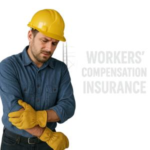
Affordable Workers’ Comp—Staffing Services
August 17, 2025
Managing Overtime and Payroll for Accurate Security Guard Workers’ Comp Audits
August 17, 2025In today’s fast-evolving industrial landscape, workplace safety remains a paramount concern for businesses across sectors. Advances in technology are now transforming conventional personal protective equipment (PPE) into smart, connected solutions that not only safeguard workers but also proactively mitigate risks. This next generation of Smart PPE integrates sensors, real-time data monitoring, and analytics to enhance hazard detection and response, considerably reducing the incidence and severity of workplace injuries.As companies strive to control costs associated with workers’ compensation claims, Smart PPE emerges as a critical investment-driving safer work environments, improving compliance, and ultimately delivering measurable financial and operational benefits. This article explores how Smart PPE is reshaping safety protocols and setting new standards for risk management in the modern workplace.
table of Contents
- The Evolution of Smart PPE and Its Impact on Workplace Safety
- Key Technologies Driving the Effectiveness of Smart Protective Equipment
- Data-Driven Risk Management Through Advanced PPE Monitoring Systems
- Best Practices for Integrating Smart PPE into Existing safety Protocols
- Q&A
- Future Outlook
The Evolution of Smart PPE and Its Impact on Workplace Safety
Over the past decade, personal protective equipment has undergone a transformational shift from basic physical barriers to sophisticated, technology-enhanced systems.Early iterations of smart PPE integrated simple sensors that alerted workers to hazardous environments, but today’s advanced gear offers real-time biometric monitoring, environmental hazard detection, and proactive risk management. These innovations utilize IoT connectivity and AI analytics to not only protect workers but also to predict and prevent injuries before they occur. The integration of wearable tech like smart helmets, gloves embedded with pressure sensors, and smart vests equipped with GPS tracking has ushered in a new era where safety is dynamic and data-driven.
Employers investing in this next generation of PPE are seeing significant reductions in workplace injuries and workers’ compensation claims. The ability to continuously monitor vital signs and exposure limits allows for immediate intervention and less downtime.Additionally, smart PPE empowers safety managers with actionable insights through dashboards and alerts, streamlining compliance and training efforts. Key benefits include:
- Real-time hazard alerts improving response times
- Data-driven preventive strategies reducing incident frequency
- Enhanced worker accountability through monitored PPE usage
- Reduced insurance premiums linked to improved safety records
| Feature | Traditional PPE | Smart PPE |
|---|---|---|
| Hazard Detection | Manual checks | Automated sensors |
| Data Monitoring | None | Continuous biometric & environmental data |
| Alert System | Visual/audible alarms | Instant notifications via mobile |
| Preventive Action | Reactive | Predictive analytics |
Key Technologies Driving the Effectiveness of Smart Protective Equipment
At the core of smart protective equipment lies the integration of advanced sensor technology. These sensors measure critical metrics such as impact force, temperature, and worker biometrics in real time, enabling immediate risk assessment. Coupled with IoT connectivity, the data collected is transmitted seamlessly to centralized monitoring systems, allowing safety managers to identify potential hazards before incidents occur. Additionally, materials science innovations provide enhanced durability and flexibility, ensuring that the smart gear remains comfortable without compromising protection.
Machine learning algorithms further elevate the functionality of smart PPE by analyzing vast datasets to predict injury risks and recommend preventative actions. This predictive capability transforms traditional safety protocols into dynamic, data-driven strategies. The table below highlights key differentiators between conventional PPE and their smart counterparts:
| Feature | Traditional PPE | Smart PPE |
|---|---|---|
| Risk Monitoring | None | Real-time with alerts |
| Data Integration | Manual reporting | Automated IoT ecosystem |
| User Feedback | Limited | Personalized and actionable |
| Material Adaptivity | Static protection | Responsive and ergonomic |
Data-driven Risk Management Through Advanced PPE Monitoring Systems
Integrating advanced monitoring systems into Personal Protective Equipment (PPE) represents a transformative shift in how companies approach workplace safety. Through real-time data collection and analytics, these smart solutions offer unparalleled visibility into risk exposure, enabling proactive intervention before incidents occur. The sophistication of these systems lies in their ability to track environmental conditions, worker vitals, and compliance metrics continuously, delivering insights that empower safety managers to tailor protective measures specific to each site’s needs.
Key benefits of leveraging data-driven PPE monitoring include:
- Early Hazard Detection: Sensors identify dangerous shifts in workplace conditions, triggering automatic alerts to prevent accidents.
- Behavioral analytics: Patterns in PPE usage and worker movements inform targeted training programs and reinforce best practices.
- Claims Reduction: documented compliance and incident data support faster, more accurate workers’ compensation claim management.
| Feature | Benefit | Outcome |
|---|---|---|
| Environmental Sensors | Monitor air quality, heat, and toxic gases | Prevents respiratory issues and heat stress |
| Wearable biometric Trackers | Track heart rate, fatigue, and hydration | Reduces risk of overexertion-related incidents |
| Compliance Alerts | Notify non-compliance with PPE protocols | Improves PPE usage consistency and safety culture |
Best Practices for Integrating Smart PPE into Existing Safety Protocols
Seamlessly blending smart PPE into your existing safety framework requires a strategic approach that balances innovation with practicality. Start by conducting a thorough risk assessment to identify areas where smart PPE can deliver the most impact. Engage frontline workers early in the adoption process to gather insights and foster buy-in, ensuring user-pleasant technology aligns with real-world tasks. Providing comprehensive training on the capabilities and limitations of smart PPE is essential; this empowers employees to use the gear effectively and safely while reinforcing accountability in safety practices.
To maintain consistency and compliance,integrate smart PPE data into your current safety monitoring systems. utilize centralized dashboards for real-time tracking and analytics, enabling swift identification of potential hazards before they result in claims. Consider the following checklist to optimize integration:
- Compatibility: Ensure new PPE communicates seamlessly with existing safety software.
- Data Privacy: Establish clear policies around employee data usage and protection.
- Maintenance: Schedule regular checks to maintain technology accuracy and reliability.
- Feedback Loop: Create channels for continuous improvement based on worker feedback and incident data.
| Integration Step | Key Action |
|---|---|
| Assessment | Identify target risks and workflows |
| Training | Educate employees on smart PPE use |
| Monitoring | Integrate data into safety management systems |
| Feedback | Review and refine based on insights |
Q&A
Q&A: Smart PPE - Next-gen Gear Reducing Workers’ Comp Claims
Q1: What is Smart PPE and how does it differ from traditional personal protective equipment?
A1: Smart Personal protective Equipment (PPE) integrates advanced technologies such as sensors, IoT connectivity, and real-time data analytics into traditional safety gear. Unlike conventional PPE, which offers passive protection, Smart PPE actively monitors environmental and physiological conditions to prevent accidents and injuries before they occur.
Q2: How does Smart PPE contribute to reducing workers’ compensation claims?
A2: By providing continuous monitoring and early warnings for hazardous conditions-such as exposure to harmful gases, fatigue detection, or improper posture-Smart PPE helps mitigate risks in real time.This proactive approach significantly lowers the incidence and severity of workplace injuries, thereby reducing the frequency and cost of workers’ compensation claims.
Q3: What industries stand to benefit most from adopting Smart PPE?
A3: High-risk sectors including construction, manufacturing, mining, oil and gas, and utilities can benefit greatly.These industries frequently enough expose workers to hazardous environments and complex operations where Smart PPE’s capabilities add a vital layer of protection and compliance assurance.
Q4: What are some key features of next-generation Smart PPE?
A4: Key features include biometric sensors monitoring heart rate and temperature, GPS tracking for location awareness, environmental sensors detecting gases or vibrations, connectivity for real-time alerts, and integration with safety management systems to support data-driven decision-making.
Q5: How does the implementation of Smart PPE impact workplace safety culture?
A5: Smart PPE fosters a proactive safety culture by empowering employees with immediate feedback about their environment and health. It also facilitates management’s ability to identify and address systemic hazards,leading to continuous improvement in safety protocols and worker well-being.
Q6: Are there any challenges or barriers to adopting Smart PPE?
A6: Yes, initial costs and integration with existing safety systems can be significant. Additionally,ensuring worker acceptance and privacy concerns related to data collection must be carefully managed. Training and ongoing support are essential to maximize the technology’s effectiveness.
Q7: What future trends can we expect in the Smart PPE market?
A7: Advancements in AI, machine learning, and wearable technology will enhance predictive capabilities and user comfort. Increased regulatory focus on occupational health and safety will drive broader adoption, while cost reductions over time will make Smart PPE accessible for smaller enterprises.
Q8: How should companies evaluate whether smart PPE is the right investment?
A8: Organizations should conduct a thorough risk assessment to identify specific workplace hazards and evaluate the potential ROI based on reduced injury rates and claims costs. Partnering with technology providers to pilot solutions can offer insights into usability and integration before full-scale deployment.
Q9: Can Smart PPE data be leveraged beyond injury prevention?
A9: Absolutely. Data collected can inform workforce training, enhance operational efficiency, and support compliance reporting. Analyzing patterns over time helps identify chronic safety issues and informs strategic health and safety planning.
this Q&A aims to provide business leaders and safety professionals with a concise overview of how Smart PPE is transforming workplace safety and reducing workers’ compensation costs through innovative technology.
Future Outlook
smart PPE represents a pivotal advancement in workplace safety, blending cutting-edge technology with essential protective gear to proactively reduce injury risks. By enabling real-time monitoring, hazard detection, and enhanced worker awareness, these next-generation solutions not only safeguard employees but also contribute to a significant reduction in workers’ compensation claims.As industries continue to embrace digital change, investing in smart PPE is not just a matter of compliance, but a strategic imperative for businesses aiming to improve operational efficiency, protect their workforce, and ultimately strengthen their bottom line.
“This content was generated with the assistance of artificial intelligence. While we strive for accuracy, AI-generated content may not always reflect the most current information or professional advice. Users are encouraged to independently verify critical information and, where appropriate, consult with qualified professionals, lawyers, state statutes and regulations & NCCI rules & manuals before making decisions based on this content.







